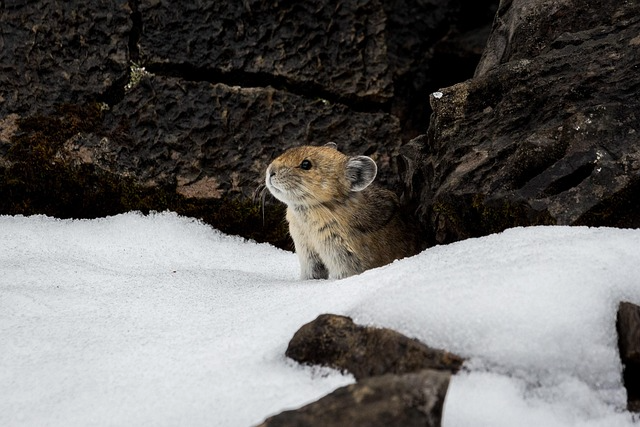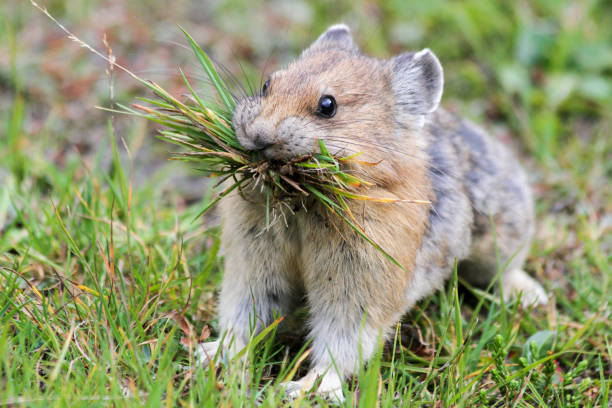Table of Contents
Scientific Classification
| Kingdom | Animalia |
| Phylum | Chordata |
| Class | Mammalia |
| Order | Lagomorpha |
| Family | Ochotonidae |
| Genus | Ochotona |
| Species | Ochotona princeps |
| Scientific Name | Ochotona princeps |
Description
The American pika is a small, round mammal that resembles a tiny rabbit. It has no visible tail and typically measures between 6 to 8 inches (15 to 20 cm) in length, weighing around 120 to 180 grams. Their fur is thick and soft, featuring shades of brown, gray, and tan that allow them to blend seamlessly with rocky environments. One of their distinctive features is their large, rounded ears, which aid in detecting predators as they navigate their rocky habitats. Unlike rabbits, pikas have short limbs, which facilitate their climbing in these rugged areas.
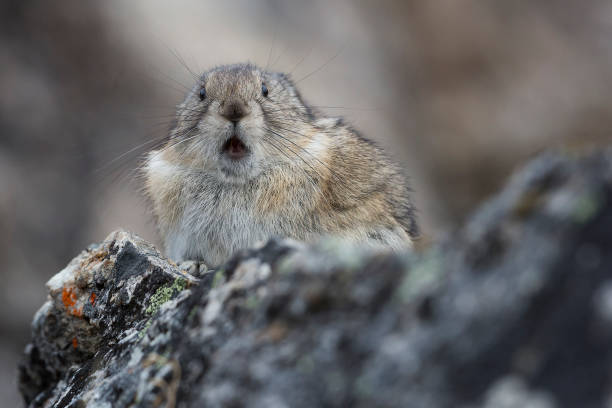
Distribution
The American pika inhabits the mountainous areas of western North America. Its range extends from British Columbia and Alberta in Canada, traversing the Rocky Mountains, Sierra Nevada, and Cascades, all the way down to New Mexico and California. Populations of pikas are often patchy and isolated, as they prefer rocky terrains.
Habitat
Pikas are found in high-altitude regions, particularly on talus slopes, which consist of rocky terrain filled with broken boulders and stones. These environments provide natural hiding places from predators and protection from severe weather. Unlike many small mammals, pikas do not dig burrows underground. Instead, they inhabit the crevices of rock piles, allowing them to stay cool during the summer and warm in the winter. Because they are sensitive to heat, pikas typically avoid going out when temperatures exceed 77°F (25°C).
Diet
American pikas are herbivores. They eat grasses, wildflowers, mosses, lichens, and alpine plants. They don’t hibernate, so in the warmer months, they gather and dry plants. This creates “hay piles” that store food for winter. Food caches are vital for their survival. The harsh winter months often provide little or no fresh vegetation. Pikas make many trips to gather and store food. This shows how hard-working they are.
Behavior
American pikas are known for their strong territorial instincts and vocalizations. They communicate with each other through high-pitched calls and squeaks, especially when signaling the presence of nearby predators. These vocalizations can vary in sound and duration, serving important functions like marking their territory or alerting other pikas in the area.
Being diurnal, pikas are most active during the day. They spend their time foraging for food, gathering and stacking hay, and defending their territory. Despite their small size, pikas are incredibly energetic and agile, easily navigating rocky terrains.
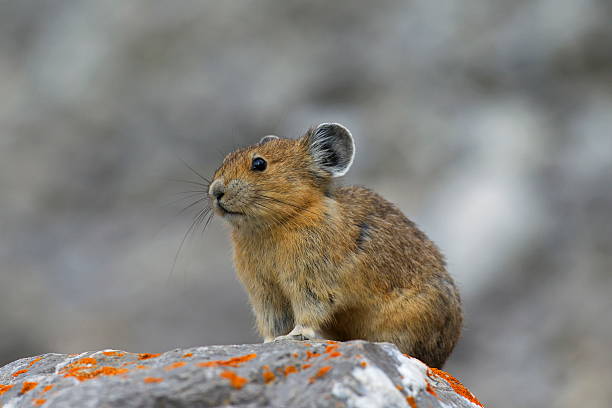
Lifespan
American pikas typically have a lifespan of 3 to 7 years in the wild. Many do not make it past their early years due to threats from predators and various environmental challenges. Their longevity is heavily influenced by factors such as food availability, climate conditions, and the presence of predators. Pikas residing in colder, higher elevations tend to fare better than those in warmer, lower areas, where heat stress poses a significant risk.
Reproduction and Lifecycle
The breeding season for American pikas takes place from late spring to early summer. Mating pairs create temporary bonds, but pikas are typically solitary creatures. After a gestation period of around 30 days, the female gives birth to a litter consisting of 2 to 5 pups.
Pika pups are born blind and rely on their mother for nourishment and protection. They stay in the nest for about a month before they become independent. Most young pikas reach sexual maturity within their first year and begin reproducing in the next breeding season. Given their short lifespan, pikas need to reproduce quickly to sustain their population numbers.
Predators
American pikas are prey to a variety of predators, including:
Weasels – Their slender bodies allow them to chase pikas into rock crevices.
Hawks and Owls – These birds of prey can spot and capture pikas from above.
Foxes and Coyotes – Opportunistic predators that hunt pikas when given the chance.
Martens and Bobcats – Skilled climbers that can navigate rocky terrains to catch pikas.
Pikas stay safe from predators by using their speed and agility. They can quickly retreat to rocky hiding spots. Their sharp hearing helps them spot danger early. This lets them alert others with alarm calls.
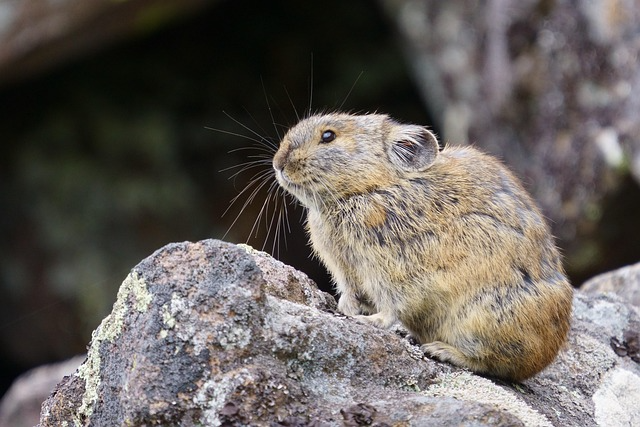
Adaptations
Thick Fur: Offers great insulation against cold, allowing them to withstand freezing temperatures.
Efficient Food Storage: Since pikas don’t hibernate, they collect food in hay piles to sustain them through winter.
Elevated Metabolism: Their fast metabolism generates body heat, but it also makes them susceptible to overheating in warmer conditions.
Camouflage: Their fur blends in with rocky environments, aiding in evading predators.
High-Altitude Adaptation: Pikas are capable of living in high-altitude areas with low oxygen levels, thriving where many other mammals find it challenging.
Conservation Status
The American pika is not currently classified as endangered, but it is under significant threat from climate change. Pikas are migrating to higher elevations as rising temperatures render their existing habitats too warm. In many areas, they are losing suitable living spaces, as their rocky environments are becoming increasingly rare.
Researchers have noted that pika populations are vanishing from lower-altitude regions where temperatures have risen. Conservationists are investigating the behavior and needs of this species to ensure its survival. Their goal is to identify effective strategies for its protection. We aim to safeguard alpine ecosystems and will monitor pika populations while raising awareness about their plight.
The American pika is a fascinating and resilient creature. It flourishes in the challenging conditions of its mountainous habitat. This small yet energetic mammal plays a crucial role in its ecosystem, serving as both prey and an indicator of environmental well-being. However, climate change poses a threat to its habitat, making conservation efforts essential for the survival of this remarkable species.
